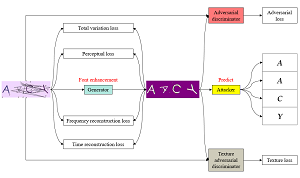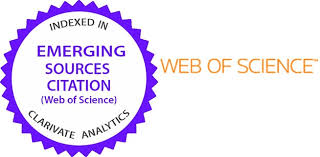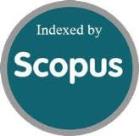FEGAN: A High-Performance Font Enhancement Network for Text CAPTCHA Preprocessing
DOI:
https://doi.org/10.46604/ijeti.2024.13977Keywords:
CAPTCHA, recognition, font enhancement, GANAbstract
This study aims to address performance deficiencies in CAPTCHA preprocessing methods that impede the accurate recognition of text CAPTCHAs, which are crucial for identifying security vulnerabilities. To improve CAPTCHA preprocessing methods, a similar font is initially searched and acquired by manually removing obstructing pixels from a target CAPTCHA and retaining the font part. Using the found font, a pseudo-dataset is generated containing a large number of clean and dirty pairs to train to the proposed supervised Font Enhancement Generative Adversarial Network (FEGAN), which is designed to effectively eliminate non-font-related interferences and preserve the font outlines. Test results show that FEGAN can improve the recognizer’s accuracy by approximately 16% to 50% on the M-CAPTCHA dataset (a publicly available dataset on Kaggle) and 5% to 35% on the P-CAPTCHA dataset (generated using the Python ImageCaptcha package), substantially outperforming the Multiview-filtering-based preprocessing approach.
References
S. Sharma and D. Singh, “CAPTCHA in Web Security and Deep-Captcha Configuration Based on Machine Learning,” 3rd International Conference for Innovation in Technology, pp. 1-6, 2024.
P. Wang, H. Gao, X. Guo, C. Xiao, F. Qi, and Z. Yan, “An Experimental Investigation of Text-Based CAPTCHA Attacks and Their Robustness,” vol. 55, no. 9, ACM Computing Surveys, article no. 196, 2023.
H. Zhang, M. Cisse, Y. N. Dauphin, and D. Lopez-Paz, “mixup: Beyond Empirical Risk Minimization,” https://doi.org/10.48550/arXiv.1710.09412, 2018.
M. Faramarzi, M. Amini, A. Badrinaaraayanan, V. Verma, and S. Chandar, “PatchUp: A Feature-Space Block-Level Regularization Technique for Convolutional Neural Networks,” Proceedings of the AAAI Conference on Artificial Intelligence, vol. 36, no. 1, pp. 589-597, 2022.
Z. Zhong, L. Zheng, G. Kang, S. Li, and Y. Yang, “Random Erasing Data Augmentation,” Proceedings of the AAAI Conference on Artificial Intelligence, vol. 34, no. 07, pp. 13001-13008, 2020.
W. Xing, M. R. S. Mohd, J. Johari, and F. A. Ruslan, “A Review on Text-Based CAPTCHA Breaking Based on Deep Learning Methods,” International Conference on Computer Engineering and Distance Learning, pp. 171-175, 2023.
Z. Noury and M. Rezaei, “Deep-CAPTCHA: A Deep Learning Based CAPTCHA Solver for Vulnerability Assessment,” https://doi.org/10.48550/arXiv.2006.08296, 2020.
X. Wan, J. Johari, and F. A. Ruslan, “Adaptive CAPTCHA: A CRNN-Based Text CAPTCHA Solver with Adaptive Fusion Filter Networks,” Applied Sciences, vol. 14, no. 12, article no. 5016, 2024.
K. Qing and R. Zhang, “An Efficient ConvNet for Text-Based CAPTCHA Recognition,” International Symposium on Intelligent Signal Processing and Communication Systems, pp. 1-4, 2022.
I. G. Mocanu, Z. Yang, and V. Belle, “Breaking CAPTCHA with Capsule Networks,” Neural Networks, vol. 154, pp. 246-254, 2022.
W. Ding, Y. Luo, Y. Lin, Y. Yang, and S. Lian, “VeriBypasser: An Automatic Image Verification Code Recognition System Based on CNN,” Computer Communications, vol. 217, pp. 246-258, 2024.
F. Liu, Z. Li, X. Li, and T. Lv, “A Text-Based CAPTCHA Cracking System with Generative Adversarial Networks,” IEEE International Symposium on Multimedia, pp. 192-193, 2018.
A. Thobhani, M. Gao, A. Hawbani, S. T. M. Ali, and A. Abdussalam, “CAPTCHA Recognition Using Deep Learning with Attached Binary Images,” Electronics, vol. 9, no. 9, article no. 1522, 2020.
C. Li, X. Chen, H. Wang, P. Wang, Y. Zhang, and W. Wang, “End-to-End Attack on Text-Based CAPTCHAs Based on Cycle-Consistent Generative Adversarial Network,” Neurocomputing, vol. 433, pp. 223-236, 2021.
Y. Wang, Y. Wei, M. Zhang, Y. Liu, and B. Wang, “Make Complex CAPTCHAs Simple: A Fast Text Captcha Solver Based on a Small Number of Samples,” Information Sciences, vol. 578, pp. 181-194, 2021.
T. Kimbrough, P. Tian, W. Liao, E. Blasch, and W. Yu, “Deep CAPTCHA Recognition Using Encapsulated Preprocessing and Heterogeneous Datasets,” IEEE Conference on Computer Communications Workshops, pp. 1-6, 2022.
G. Ye, Z. Tang, D. Fang, Z. Zhu, Y. Feng, P. Xu, et al., “Using Generative Adversarial Networks to Break and Protect Text Captchas,” ACM Transactions on Privacy and Security, vol. 23, no. 2, article no. 7, 2020.
N. Zhang, M. Ebrahimi, W. Li, and H. Chen, “Counteracting Dark Web Text-Based CAPTCHA with Generative Adversarial Learning for Proactive Cyber Threat Intelligence,” ACM Transactions on Management Information Systems, vol. 13, no. 2, article no. 21, 2022.
M. O. Yusuf, D. Srivastava, D. Singh, and V. S. Rathor, “Multiview Deep Learning-Based Attack to Break Text-CAPTCHAs,” International Journal of Machine Learning and Cybernetics, vol. 14, no. 3, pp. 959-972, 2023.
D. O. Ishkov and V. I. Terekhov, “Text CAPTCHA Traversal with ConvNets: Impact of Color Channels,” 4th International Youth Conference on Radio Electronics, Electrical and Power Engineering, pp. 1-5. 2022.
A. Koshy, N. B. MJ, S. A, and A. John, “Preprocessing Techniques for High Quality Text Extraction from Text Images,” 1st International Conference on Innovations in Information and Communication Technology, pp. 1-4, 2019.
N. Kim, D. Jang, S. Lee, B. Kim, and D. S. Kim, “Unsupervised Image Denoising with Frequency Domain Knowledge,” https://doi.org/10.48550/arXiv.2111.14362, 2021.
X. Mao, Q. Li, H. Xie, R. Y. K. Lau, Z. Wang, and S. P. Smolley, “Least Squares Generative Adversarial Networks,” Proceedings of the IEEE International Conference on Computer Vision, pp. 2794-2802, 2017.
J. Johnson, A. Alahi, and L. Fei-Fei, “Perceptual Losses for Real-Time Style Transfer and Super-Resolution.” Computer Vision – ECCV 2016: 14th European Conference on Computer Vision, pp. 694-711, 2016.
R. R. Selvaraju, M. Cogswell, A. Das, R. Vedantam, D. Parikh, and D. Batra, “Grad-CAM: Visual Explanations from Deep Networks via Gradient-Based Localization,” International Journal of Computer Vision, vol. 128, no. 2, pp. 336-359, 2020.

Published
How to Cite
Issue
Section
License
Copyright (c) 2025 Xing Wan, Fazlina Ahmat Ruslan, Juliana Johari

This work is licensed under a Creative Commons Attribution-NonCommercial 4.0 International License.
Copyright Notice
Submission of a manuscript implies: that the work described has not been published before that it is not under consideration for publication elsewhere; that if and when the manuscript is accepted for publication. Authors can retain copyright in their articles with no restrictions. Also, author can post the final, peer-reviewed manuscript version (postprint) to any repository or website.

Since Jan. 01, 2019, IJETI will publish new articles with Creative Commons Attribution Non-Commercial License, under Creative Commons Attribution Non-Commercial 4.0 International (CC BY-NC 4.0) License.
The Creative Commons Attribution Non-Commercial (CC-BY-NC) License permits use, distribution and reproduction in any medium, provided the original work is properly cited and is not used for commercial purposes.







.jpg)


